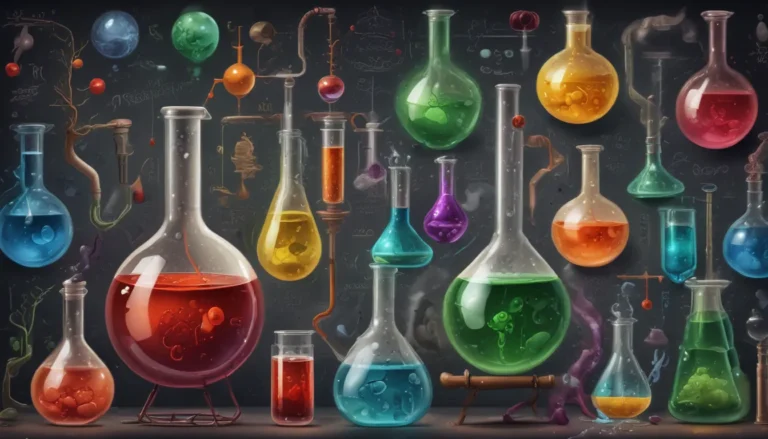A Note About Images: The images used in our articles are for illustration purposes only and may not exactly match the content. They are meant to engage readers, but the text should be relied upon for accurate information.
Welcome to the intriguing world of parts per billion (ppb), a unit of measurement that plays a significant role in various scientific disciplines, especially in chemistry. While percentages are more commonly known, ppb takes precision to a whole new level by representing one part out of a billion parts in a mixture. In this article, we will delve into the extraordinary facts about ppb, uncovering its importance in environmental studies, pharmaceuticals, and industrial processes. So, sit back, relax, and prepare to be amazed by the incredible world of parts per billion.
Understanding Parts Per Billion (ppb)
What exactly is a part per billion? Parts per billion is a unit of measurement used to express extremely small concentrations or quantities in a mixture. It represents one billionth of the total units, making it a crucial tool for precise calculations and measurements in various scientific applications.
Importance of ppb in Chemistry
Parts per billion plays a vital role in the field of chemistry, allowing scientists to determine and express minuscule amounts of substances in solutions. This precision enables accurate measurements and calculations in chemical reactions and analytical tests, contributing to advancements in research and development.
Significance of ppb in Environmental Studies
In environmental studies, parts per billion is instrumental in measuring the concentration of pollutants in air, water, soil, and food. By using ppb measurements, scientists can assess the impact of contaminants on ecosystems and human health, leading to better-informed environmental policies and conservation efforts.
The Role of ppb in Pharmaceuticals
Parts per billion is essential in the pharmaceutical industry for ensuring the safety and efficacy of medications. It aids in determining proper dosages, detecting impurities, and monitoring the quality of drug formulations, ultimately safeguarding patient health and well-being.
ppb in Industrial Processes
Industrial processes rely heavily on parts per billion measurements to monitor and control the levels of various chemicals and contaminants. By utilizing ppb, industries can ensure compliance with safety regulations, maintain product integrity, and optimize production processes for efficiency and quality.
Limitations of ppb Measurements
While parts per billion is a highly sensitive unit of measurement, it does come with certain limitations. For substances with extremely high concentrations or those that are not uniformly distributed in mixtures, ppb may not provide accurate measurements, requiring alternative methods for analysis.
Real-Life Examples of ppb
Parts per billion can be observed in practical applications, such as detecting trace amounts of heavy metals in drinking water, measuring air pollution levels, and determining the concentration of essential nutrients in food and supplements. These examples highlight the versatility and importance of ppb in various contexts.
The Role of ppb in Scientific Research
Parts per billion plays a crucial role in scientific research, enabling precise measurements and analysis in fields such as environmental science, toxicology, pharmacology, and nanotechnology. By using ppb, researchers can gather accurate data and insights to advance our understanding of complex processes and phenomena.
In conclusion, parts per billion (ppb) is a fundamental unit of measurement that offers valuable insights into the concentration of substances in diverse settings. By exploring the extraordinary facts about ppb, we gain a deeper appreciation for its significance in chemistry and scientific research. With its unparalleled sensitivity and precision, ppb continues to drive innovation and discovery in various fields, paving the way for a better understanding of the world around us.
FAQs about Parts Per Billion (ppb)
- What does parts per billion (ppb) mean?
-
Parts per billion represents the ratio of the number of particles or molecules of a substance compared to one billion parts of a whole, denoting extremely small concentrations.
-
How is ppb different from other concentration units?
-
Ppb is highly sensitive, capable of measuring trace amounts of substances, making it more specific than percentage or parts per million (ppm) for analyzing minute quantities.
-
What are some applications of ppb?
-
Ppb is utilized in environmental monitoring, food safety testing, pharmaceutical research, and industrial quality control to identify contaminants, assess product purity, and ensure regulatory compliance.
-
How is ppb measured?
-
Ppb is typically measured using specialized laboratory equipment like spectrometers or gas chromatographs, which provide accurate and reliable results for substances at very low concentrations.
-
How does ppb relate to human health?
-
Ppb is essential for assessing potential health risks from exposure to harmful substances by measuring trace amounts of pollutants or toxins, enabling informed decisions to protect public health.
-
Can ppb be converted to other concentration units?
-
Yes, ppb can be converted to other units such as parts per million (ppm) or percentage using conversion factors to calculate equivalent values for comparison.
-
Is ppb only used in chemistry?
-
No, ppb is employed in various scientific disciplines beyond chemistry, including toxicology, environmental science, and pharmacology, showcasing its versatility and importance in diverse fields.
-
Are there regulations regarding ppb?
- Regulatory bodies worldwide establish standards and guidelines for acceptable levels of substances measured in ppb to protect public health, the environment, and ensure product safety, promoting global standards of quality and safety.
Our commitment to providing accurate and engaging content drives us to ensure that each fact we share is meticulously reviewed for authenticity and credibility. With your support and contributions, we strive to deliver high-quality information that enriches your learning and exploration journey. Trust in our dedication to quality and authenticity as we continue to uncover fascinating insights and knowledge for your benefit.






